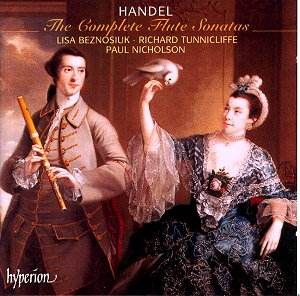 Composer: Claude Debussy (1862-1918), Henri Dutilleux (b. 1916), Maurice Ravel (1875-1937)
Composer: Claude Debussy (1862-1918), Henri Dutilleux (b. 1916), Maurice Ravel (1875-1937)
Works: String Quartet in G minor, Op. 10; Ainsi la nuit; String Quartet in F
Performers: Belcea String Quartet (Corina Belcea, Laura Samuel, violins; Krzysztof Chorzelski, viola; Alisdair Tait, cello)
Recording: Potton Hall, Suffolk, May 2000 [DDD]
Label: EMI CDZ574020-2
The Belcea Quartet’s debut recording presents a compelling exploration of the French string quartet repertoire, juxtaposing the impressionistic lyricism of Debussy and Ravel with the modernist textures of Dutilleux’s “Ainsi la nuit.” Each work represents a significant evolution in the language of chamber music, highlighting the transition from late Romanticism through to the mid-twentieth century. Debussy’s Quartet in G minor, composed in 1893, reveals the composer’s burgeoning impressionistic style, while Ravel’s 1904 Quartet in F showcases his distinctive flair for color and rhythm. Dutilleux, writing between 1973 and 1976, encapsulates the complexities of contemporary soundscapes, making the Belcea’s inclusion of his work not only astute but essential for contextual understanding.
The performance of Debussy’s quartet is particularly noteworthy for its vibrant articulation and nuanced phrasing. The Belcea Quartet imbues the first movement with a buoyant energy, allowing the intricate interplay of motifs to shimmer with clarity. Their execution of the slow movement reflects a profound emotional depth, capturing the stark desolation that pervades the music. The pizzicato sections of the Scherzo demonstrate remarkable vitality, embodying the exotic influences that inspired Debussy. The ensemble’s keen responsiveness to dynamics and articulation brings forth the kaleidoscopic colors inherent in the score, enhanced further by the studio’s acoustics, which create an enveloping sound texture.
Ravel’s Quartet in F is characterized by its lighter texture and playful spirit, a contrast that the Belcea Quartet navigates with finesse. The opening movement’s improvisatory feel is deftly balanced against the meticulous structural integrity that Ravel demands. The second movement’s frequent shifts in mood are executed with a keen sensitivity to instrumental color, allowing the players to reveal the underlying tensions and release that are essential to Ravel’s conception. The slow movement retains the same tender quality evident in Debussy’s work, showcasing the quartet’s ability to draw out emotional subtleties while maintaining cohesion across the ensemble.
Dutilleux’s “Ainsi la nuit” stands as a centerpiece of this recording, challenging the performers and listeners alike with its intricate textures and harmonic language. The Belcea Quartet’s familiarity with the composer, having collaborated with him, lends an authority to their interpretation that is palpable. Their ability to maintain a sense of stasis while navigating the seven sections, interspersed with haunting parentheses, showcases their deep immersion in the piece’s sound-world. This performance stands favorably against that of the renowned Arditti Quartet, with both interpretations offering distinct perspectives on this modern masterpiece.
The recording quality is exemplary, capturing the nuances of each instrument with clarity and warmth. The balance between the voices is carefully managed, ensuring that the inner lines of each work are not only audible but resonate with the emotional weight intended by the composers. The engineering allows for an immersive experience, making the listener acutely aware of the interplay between the instruments as they traverse through the varied landscapes of these three significant works.
This disc is a testament to the Belcea Quartet’s burgeoning talent and artistic vision. Their interpretations are informed and sensitive, bringing a freshness to these well-trodden masterpieces while also shedding light on the complexities of Dutilleux’s composition. As they continue on this thoughtfully chosen path, one can anticipate that they will contribute meaningfully to the chamber music canon. A highly recommended recording that promises both intellectual engagement and sonic pleasure.



